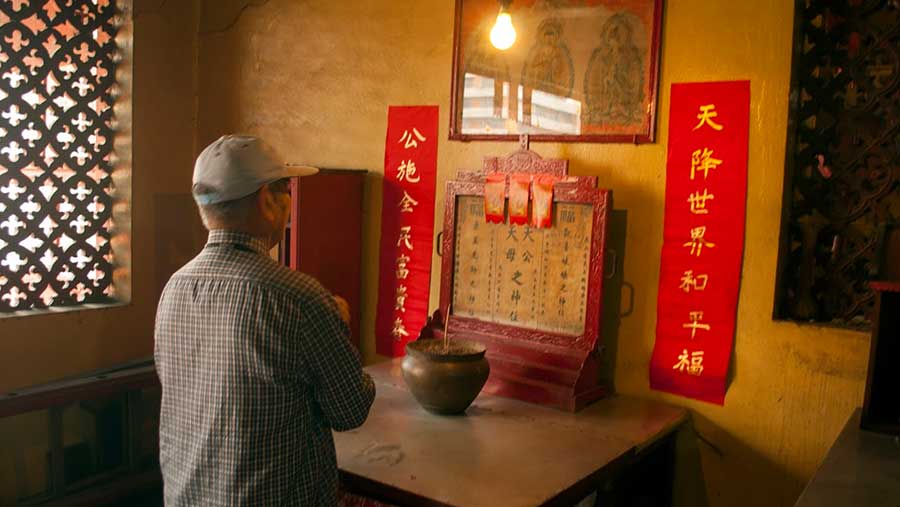It's early Sunday morning and the sun is yet to come out, but the stove is already fired up and the morning silence is broken by the sound of the knife hitting the chopping plate. Night owls crawl out of their late-night parties and call centre night shifts to rejuvenate themselves with bowls of hot fish ball soups from the roadside vendors. Hungry souls huddle around a makeshift stall, jostling with each other to grab the day’s first meal. Yes, it is the early morning Chinese breakfast at Tiretti Bazar in central Calcutta. Sadly, in the last few decades, the breakfast has lost its charm as more and more Calcutta Chinese have left the city.
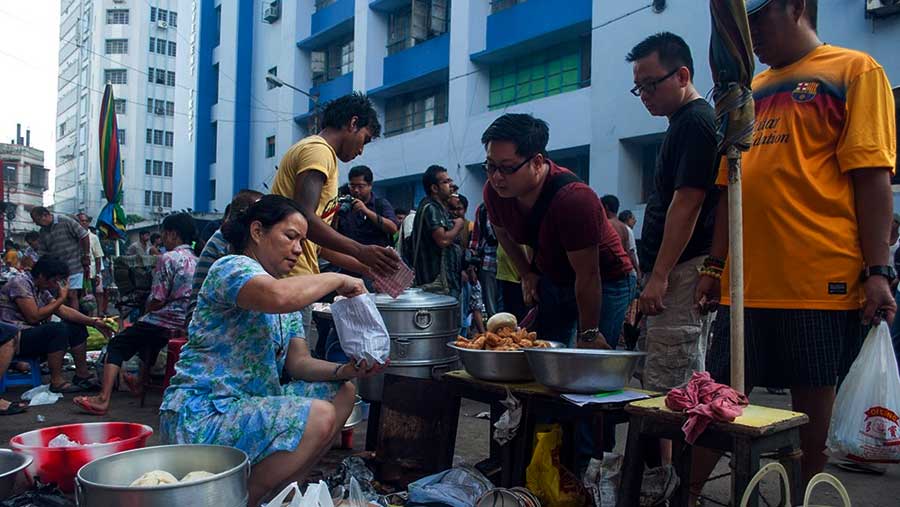
Chinese Breakfast at Tiretti Bazaar
But Tiretti Bazaar – Calcutta’s old Chinatown – is not just about breakfast. Hidden in its labyrinth are six Chinese Temples dedicated to different Taoist gods and goddesses. Interestingly, there are clubs attached to these temples, serving as hubs of activity for the Calcutta Chinese (approximately 2,000 in number), who still call the city their home. In the evening, the members of the club indulge in Bengali-style adda, over cups of green tea. Some read the Chinese newspaper or play the board game, Mahjong.
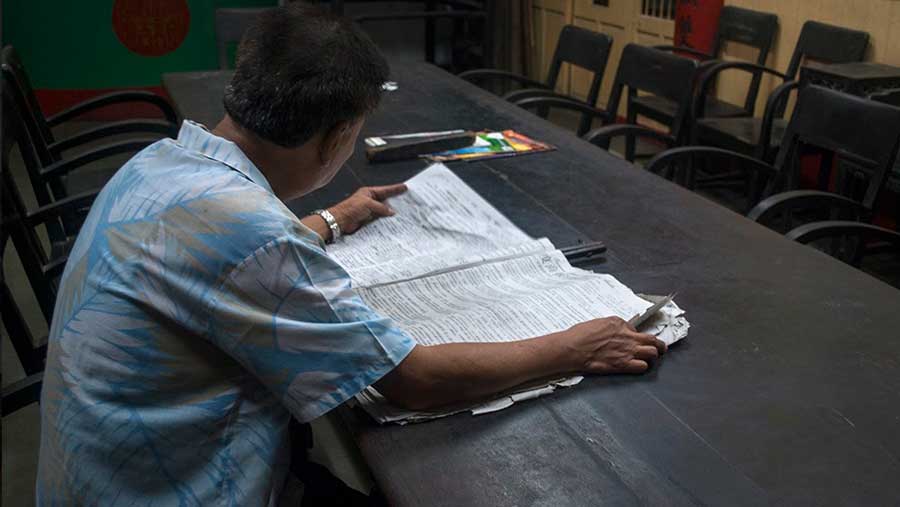
Reading the Chinese newspaper inside the Sea Ip club
Sea Ip Church
The Chinese temples are customarily called churches. Among the six temples, Sea Ip Church is the most accessible. Built in 1905, the Sea Ip Church, a two-storied building, houses the club on the ground floor while the temple is located on the first floor, dedicated to the Kuan Yin, the goddess of mercy and kindness.
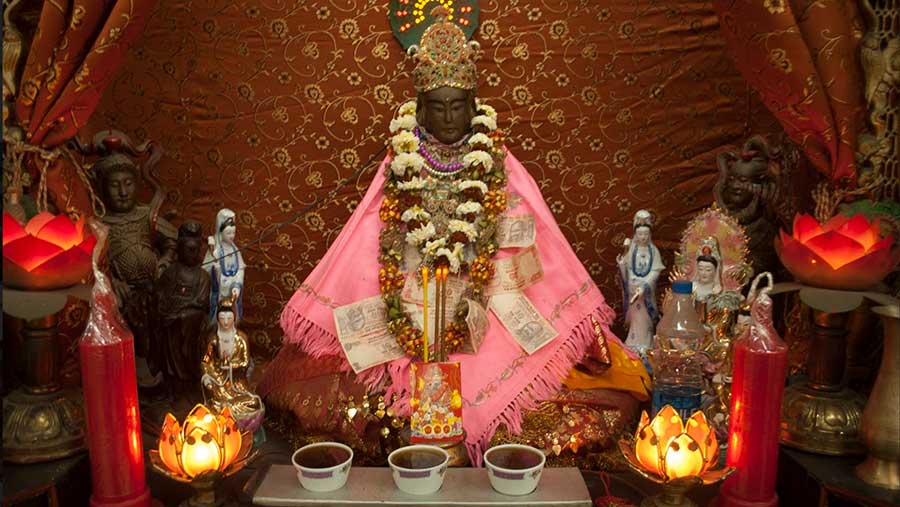
Inside Sea Ip Church
Toong Church
In the next lane is Toong Church. Dating back to 1924 it once housed the Nanking Restaurant on the ground floor and the Chinese temple on the first floor. It was probably the first Chinese restaurant in the country and was a favourite for many Bollywood stars. Nanking closed in the late 1970s and a prolonged court case kept the building under lock and key for over four decades. Finally it was resolved, and today the ground floor houses a giant statue of Buddha and the first floor houses a beautiful wooden statue of the Chinese God of war, Kuan Ti.
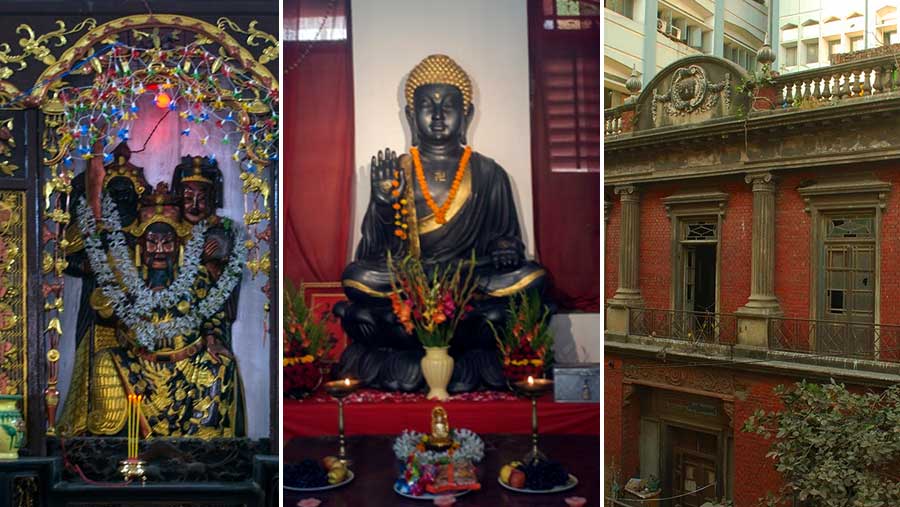
Inside Toong On Church from within and without, along with the newly installed Buddha statue inside
Gee Hing Church
The other four Chinese temples are located on the other side of the India Exchange Place. At the very entrance of Blackburn Lane is the Gee Hing Church, located above Chen’s Carpentry. This too is dedicated to the god of war and here the club shares its space with the temple. Elderly Chinese are often spotted playing Mahjong.
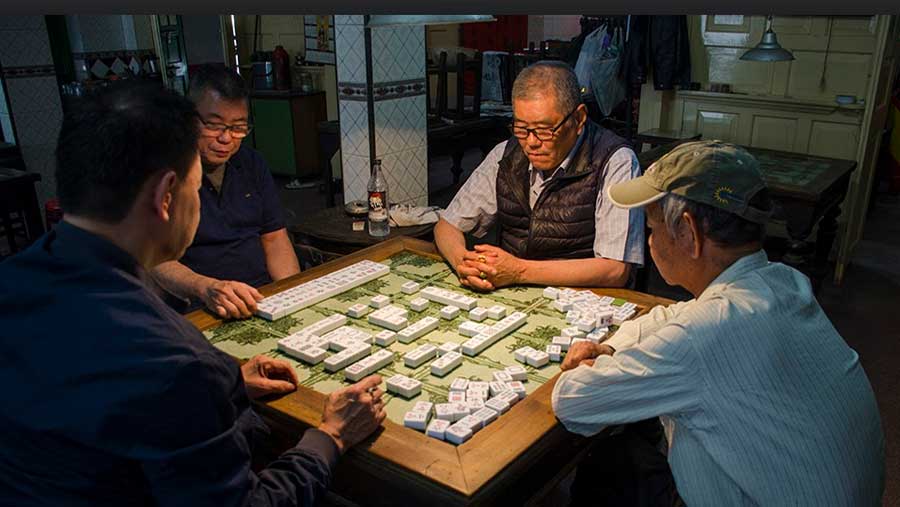
A game of Mahjong in Gee Hing Church
Sea Voi Yune Leong Futh Church and Thien Haue Church
Further down the lane is the Sea Voi Yune Leong Futh Church, a very small shrine dedicated to the Chinese god and goddess of earth. Further down the Blackburn lane and at the beginning of Damzen Lane is the Thien Haue Church. Located on the first floor of a dilapidated building, it is extremely difficult to locate. This small shrine is dedicated to Kwan Kung, the Chinese god of fortune.
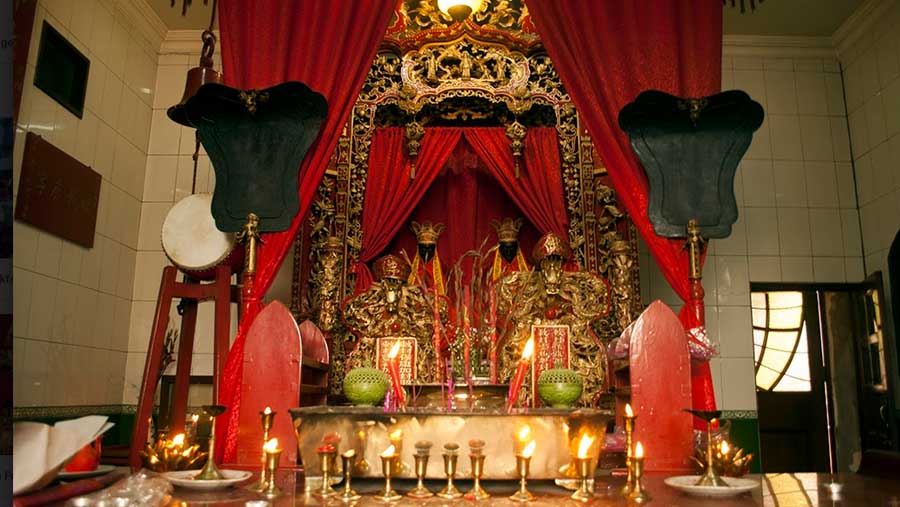
Inside Sea Voi Yune Leong Futh Church
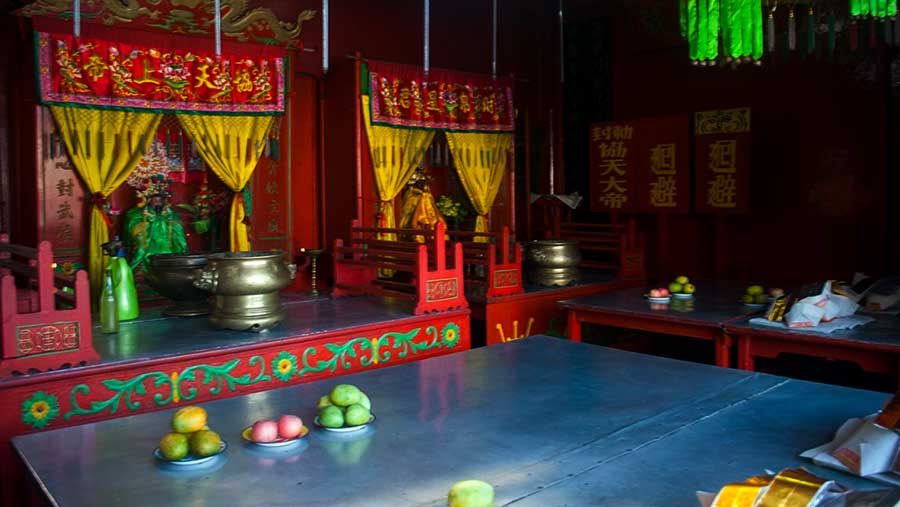
Inside Thien Haue Church
Nam Soon Church
At the very end of the Damzen Lane is the Nam Soon Church, which is also dedicated to the Chinese god of war Kuan Ti. It has a large shrine with a bit of open space. The temple houses a set of weapons as well as numerous images and statues of Chinese gods and goddesses.
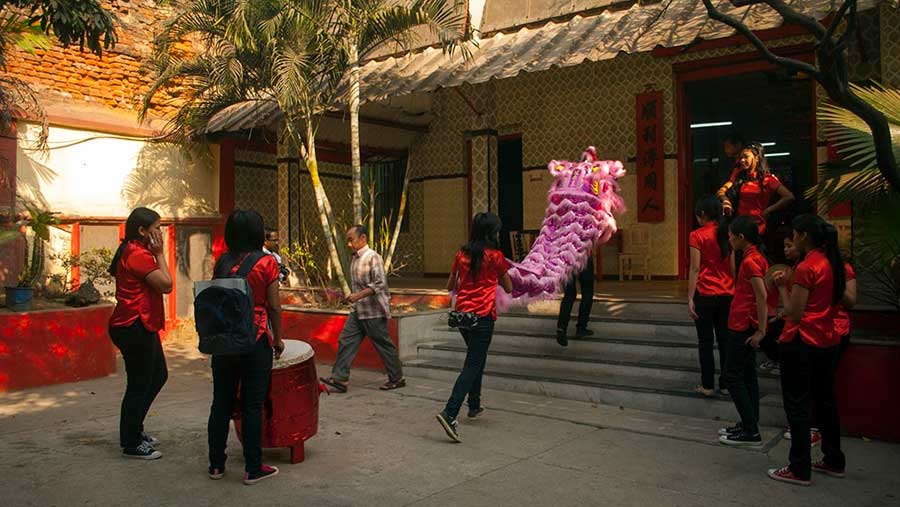
Chinese New Year celebrations in Nam Soon Church
During Chinese New Year, members of the clubs from each temple emerge in various groups for their lion dance and move through the lanes and bylanes of old Chinatown. With the dwindling Chinese population of Calcutta, these small shrines serve as islands, keeping the Chinese culture of Kolkata alive.
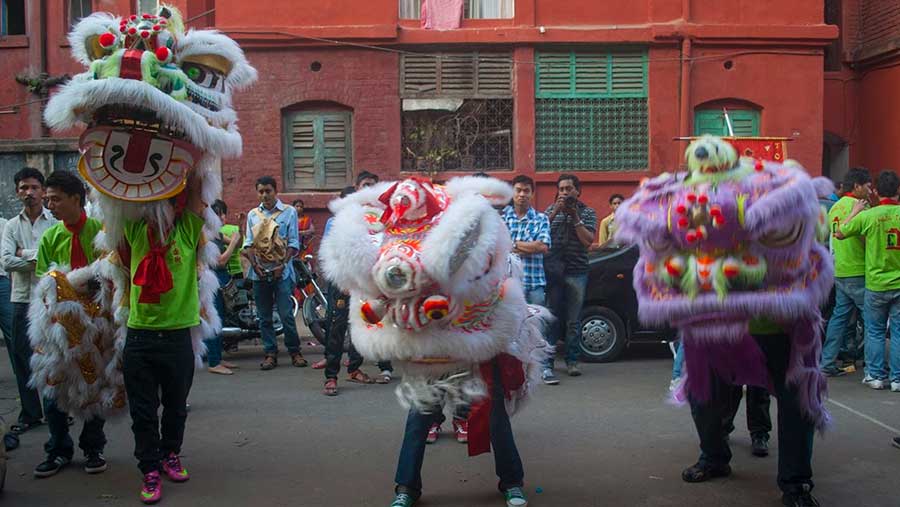
Text and photographs by the author.
Rangan Datta is a freelance travel writer and photographer. He lives for the thrill of exploring off-beat places. His wanderlust was ignited at a very young age by an ordinary two-day trip to Puri. When he is not travelling, he is teaching mathematics and computer applications.
